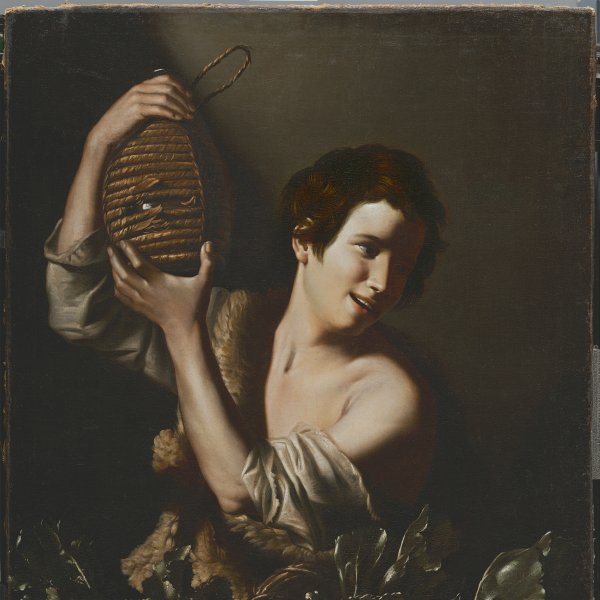Tommaso Salini
Rome, ca. 1575 -1625
Tommaso Salini was born in Rome around 1575 where he lived and worked throughout his career. In 1605 he is documented as entering the Accademia di San Luca, from which he was expelled at some point before 1618, the year when he applied for readmission.
Salini is better known for his role as witness in the court case brought by his friend Giovanni Baglione against Caravaggio than as a painter. Despite the fact that his work has been the subject of various studies in recent decades the chronology of his oeuvre is still incomplete. Salini’s known works comprise religious compositions, genre scenes and still lifes.
Salini’s religious paintings fall within the late Mannerist tradition of artists such as Santi di Tito and Scipione Pulzone, although he was also influenced by some aspects of Caravaggio’s naturalism. Saint Nicholas of Tolentino (Rome, San Agostino), Saint Agnes saved by an Angel (present location unknown), The Ecstasy of Saint Francis (Accademia di San Luca, Rome) of 1618 (donated to the Accademia) and a banner painted for the church of the Santi Quattro Coronati in Rome (private collection, Milan) are among the securely attributed works by his hand.
According to the biographer Baglioni, who was a close friend and probably his teacher, Salini painted still lifes with vases of flowers. Still Life with Fruit and Vegetables of 1621 (private collection, Zurich) is the only signed and dated work known by the artist. Among the few still lifes attributed to him are Young Peasant with a Flask (Museo Thyssen-Bornemisza, Madrid), Fruit, Vegetables and Shells (Ian Applevy collection, Jersey), and Still Life with Fruit and Game (Lodi collection, Campione d’Italia). No floral still lifes have yet been securely attributed to him but the presence of thirty-six in the inventory of the Ludovisi collection and one in the collection of Cardinal Francesco del Monte indicates the popularity and demand for works of this type by the artist.
Salini is better known for his role as witness in the court case brought by his friend Giovanni Baglione against Caravaggio than as a painter. Despite the fact that his work has been the subject of various studies in recent decades the chronology of his oeuvre is still incomplete. Salini’s known works comprise religious compositions, genre scenes and still lifes.
Salini’s religious paintings fall within the late Mannerist tradition of artists such as Santi di Tito and Scipione Pulzone, although he was also influenced by some aspects of Caravaggio’s naturalism. Saint Nicholas of Tolentino (Rome, San Agostino), Saint Agnes saved by an Angel (present location unknown), The Ecstasy of Saint Francis (Accademia di San Luca, Rome) of 1618 (donated to the Accademia) and a banner painted for the church of the Santi Quattro Coronati in Rome (private collection, Milan) are among the securely attributed works by his hand.
According to the biographer Baglioni, who was a close friend and probably his teacher, Salini painted still lifes with vases of flowers. Still Life with Fruit and Vegetables of 1621 (private collection, Zurich) is the only signed and dated work known by the artist. Among the few still lifes attributed to him are Young Peasant with a Flask (Museo Thyssen-Bornemisza, Madrid), Fruit, Vegetables and Shells (Ian Applevy collection, Jersey), and Still Life with Fruit and Game (Lodi collection, Campione d’Italia). No floral still lifes have yet been securely attributed to him but the presence of thirty-six in the inventory of the Ludovisi collection and one in the collection of Cardinal Francesco del Monte indicates the popularity and demand for works of this type by the artist.




